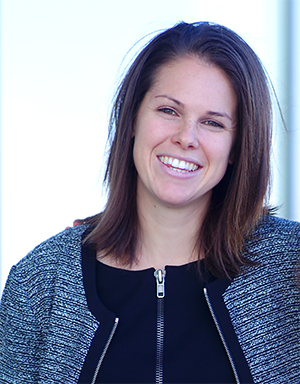Meet the Mentors
The whys of design thinking
As MLA's Design Thinker in Residence, Sam Bucolo asks a lot of questions.

The main one being 'why?'
"It's something as a society we don't do enough. We work on problem and solution thinking but without asking why something is a problem and why does it need a solution," Sam said.
Sam has spent 25 years as an academic and consultant on design thinking. What is design thinking, you ask? Wikipedia defines it as 'a form of solution-based thinking with the intent of producing a constructive future result.'
Sam is working with MLA to introduce new approaches to take on the challenges of the red meat industry. He helped design the MLA Donor Company’s (MDC) Producer Innovation Fast-Track program, encouraging its emphasis on a culture of learning and experimentation in addition to delivering tangible outcomes.
Sam has been blown away by the size and complexity of the Australian red meat industry and the variety of the challenges and opportunities faced all along the value chain - from producers to exporters.
"There is a need to create better connectivity between all these sectors and build stronger relationships between business and research," he said.
"The other challenge is changing industry thinking to focus on longevity by really delving into complex problems.
"Not everyone takes to changing their thinking. It can be an ugly mirror reflecting back at you. "
Sam said applying design thinking to a Producer Innovation Fast-Track project allows participants to build capability to rapidly assess their ideas.
"The process starts by asking innovators to pause and ask themselves are we sure we are solving the right problem? Could this be solved in a different way? Would this solution have value to someone else and how would they adopt it?" he said.
While it is great to start a project with a design thinking lens, according to Sam the value of the approach is in applying it implicitly throughout the life of the project to constantly check the assumption and ensure ‘you're solving the right problem’.
"This action can be applied to both specific innovation projects or to many of the challenges we face on a daily basis," he said.
"It's not just something you learn at a one day workshop and then let it sit on a shelf. You need to use it all the time."
Here are Sam's tips for applying design thinking to challenges:
- Understand the issue: "As Einstein said if we have an hour to solve a problem we should spend 59 minutes defining it and then it will take one minute to solve." Start with the macro challenge and then pull it to pieces and get to know the micro issues.
- Listen and learn: Go out and talk to the people affected by the problem and find out how big it is and how the solution should work for them. Listen to their responses.
- Be flexible: The problem might not need to be solved, it might not be a problem for a large group of people or the solution might be something you didn't expect. Don't get locked into solving a particular problem, as it could change or solving one challenge can create others.
- Collaborate: Look to other organisations and people in your industry to work with and don't forget cross-industry collaboration. Sometimes this can reveal an existing solution.
Information: Sam Bucolo E: sbucolo@mla.com.au
What is design thinking? Design Thinking is a problem solving methodology especially well-suited for investigating ill-defined problems that is human-centered, possibility-focused and hypothesis-driven.
It is a style of thinking that combines empathy for the users and immersion in the context of a problem, creativity in the generation of insights and solutions, and a data-based experimental approach to assessing the quality of solutions. (Jeanne Liedtka- strategist)
Sarah Nolet
One of MLA Donor Company’s Producer Innovation Fast-Track streams offers participants support and mentoring during new venture development. Sarah Nolet, CEO of AgThentic, is the mentor for the Producer Innovation Fast-Track new venture stream, and is working closely with participants delivering a customised support program.
Through AgThentic, she also works with start-ups and innovators bringing technology and new businesses to agriculture around the world.
Sarah is helping the Fast-Track participants ensure they 'un-pack' and examine their business model with real world customers, before further developing their product.
"It's really important to remember no two businesses are the same and not every idea will be an overnight success. In fact, very few are," she said.
"Your idea might not have the potential to be a tech start-up. If the segment is not very big, or if you’re only solving a problem for a few people, you might not be able to build an international company or raise venture capital.
"You might have a small consulting or service business, and that’s fine. It’s critical to know your ambitions and not put too much pressure on yourself. "
Here are Sarah's top tips for developing a new business idea in agriculture:
- Get to know your customer: "I cannot emphasize enough how important it is. Talk to dozens of potential customers (or more!) until you know everything about who you’re selling to, what they care about and what their needs are."
- Understand the market: "If you have a solution to YOUR problem, that’s great and you might have a product. But you don’t have a business until you can find a market segment willing to pay for you to solve that problem. Figuring out how big that segment is, and what that means for your business model, is critical."
- Fake it till you make it (just a little bit): "Many aspiring entrepreneurs want to wait until they have a fully baked solution before they get out there and start selling it. Instead, figure out how to test your idea, or aspects of your product, before you invest in fully building it. This might be as simple as an online landing page to test demand or to test a feature, or go as far as offering a service while you refine how to best productise it."
- Ask for help: "Being an entrepreneur can be lonely. Having trusted advisors and experts in your corner can help accelerate growth, and you can learn from mistakes and successes they’ve seen before."
- It’s all about execution: "Ideas, while important, are worth nothing without execution. I see many aspiring entrepreneurs who place too much value on their amazing idea, but don’t roll up their sleeves and get their hands dirty to make it a reality."
Need a hand? Sarah recommends Steve Blank’s How to Build a Startup course - available for free at : udacity.com/course/how-to-build-a-startup--ep245
Two tools in the course-the business model canvas and the value proposition canvas - are critical, according to Sarah.


